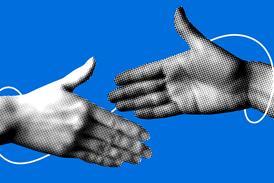Insurers have sought solutions to lower motor vehicle repair prices for many years. Squeezing a cheaper labour rate from the repairer has been a constant source of friction and indeed, all too often the nub of antagonism and dubious activities.
More recently, insurers have toyed with the idea of running their own accident repair shops, aiming to take a large chunk of the business and to learn exactly how the repair business works.
However, the performance of these repair networks has left a lot to be desired and the jury is still out on whether this is a profitable route or not.
Joint ventures with the repair trade have been mooted, but the approved network of independent shops is still the preferred regime. Meanwhile, repair companies are looking to merge with bigger groups to create larger networks of repair centres.
Nationwide Crash Repair Centres, part of the Perry Group, has joined forces with its sister company International Motor Parts to offer a solution to sourcing cheaper parts. It is a move that could shake up the industry and offer a lifeline to beleaguered repair centres.
The Nationwide Crash Repair Centre has a network of more than 60 bodyshops and is the biggest single repair centre brand in Europe.
International Motor Parts is a major motor trade company. It has developed the UK's largest supply line and inventory of crash repair panels, lighting units and exterior door mirrors.
Many of IMP's parts are priced below the established supply rates of the major motor manufacturers.
Some insurers have already authorised IMP parts to be fitted during repairs. Industry assessments prove that the quality of the IMP components equals that of traditionally sourced parts.
IMP has established a test-fit trial programme at the Bletchley repair centre with a wide selection of IMP parts being fitted and full data noted and stored on video records.
This quality control information is readily available to parts distributors, repairers and the insurers, and acts as the most positive and practical quality assurance.
IMP has invested heavily in the ecommerce route to market. An extensive online catalogue enables repairers and IMP distributors to identify the correct parts from over 5,000 listed items, with each one clearly illustrated. On the CD-rom version of the catalogue many parts are illustrated with video clips showing 360º of the component to ease identification of tricky items.
As an international player, each part is described in 12 languages. There is also an online ordering facility providing distributors with access to the IMP inventory to check stocks and order the component for overnight delivery.
What is the source of IMP panels and parts? The global buying polices of the motor conglomerates have created a network of component suppliers that can sell their parts to the independent supply industry as well as directly to car manufacturers. As a result, the parts' quality is, in more and more cases, exactly the same as the maker's part but at a more competitive price. IMP's route to market is the shortest in the supply chain creating substantial savings to end-users.
The insurance industry has funded the Thatcham Research Centre for years and the mandate has been to assess the quality of aspects such as materials, panels, paint and equipment, and to monitor the process times and costs. While a great deal of benefit has been derived from this work, it has often been the case that an insurer will accept the standard process times listed by Thatcham for a known repair function, but will ignore the recommended hourly rate and apply their own calculated or negotiated remuneration rate.
If the insurer is getting lower prices for IMP parts for repair, is the repairer seeing reduced margins? The answer is no. The discount structure for the IMP parts is better with the repairer receiving the same revenue even from a lower-priced component. However, with the overall qouta of repair costs being lower, the repairer is more likely to increase the number of jobs from that source of work, thus significantly increasing both output and turnover.
While every effort is made by insurance companies to reduce repair costs, it is the quality of repair that is the essential element in maintaining policyholder loyalty. Driving down the cost of repair is the aim of the insurance industry generally and the emergence of the comprehensive IPM source and inventory must contribute to this cause for the benefit of all policy providers and policyholders.





































